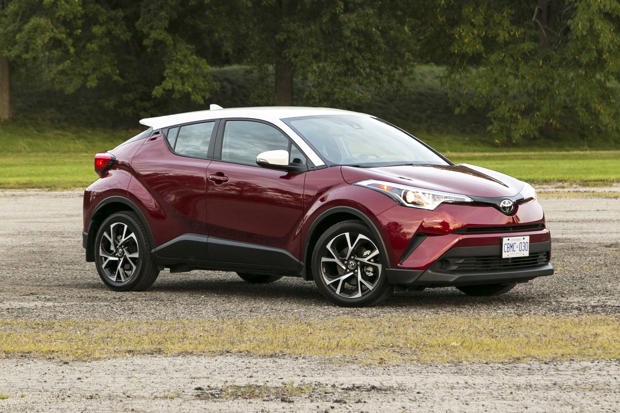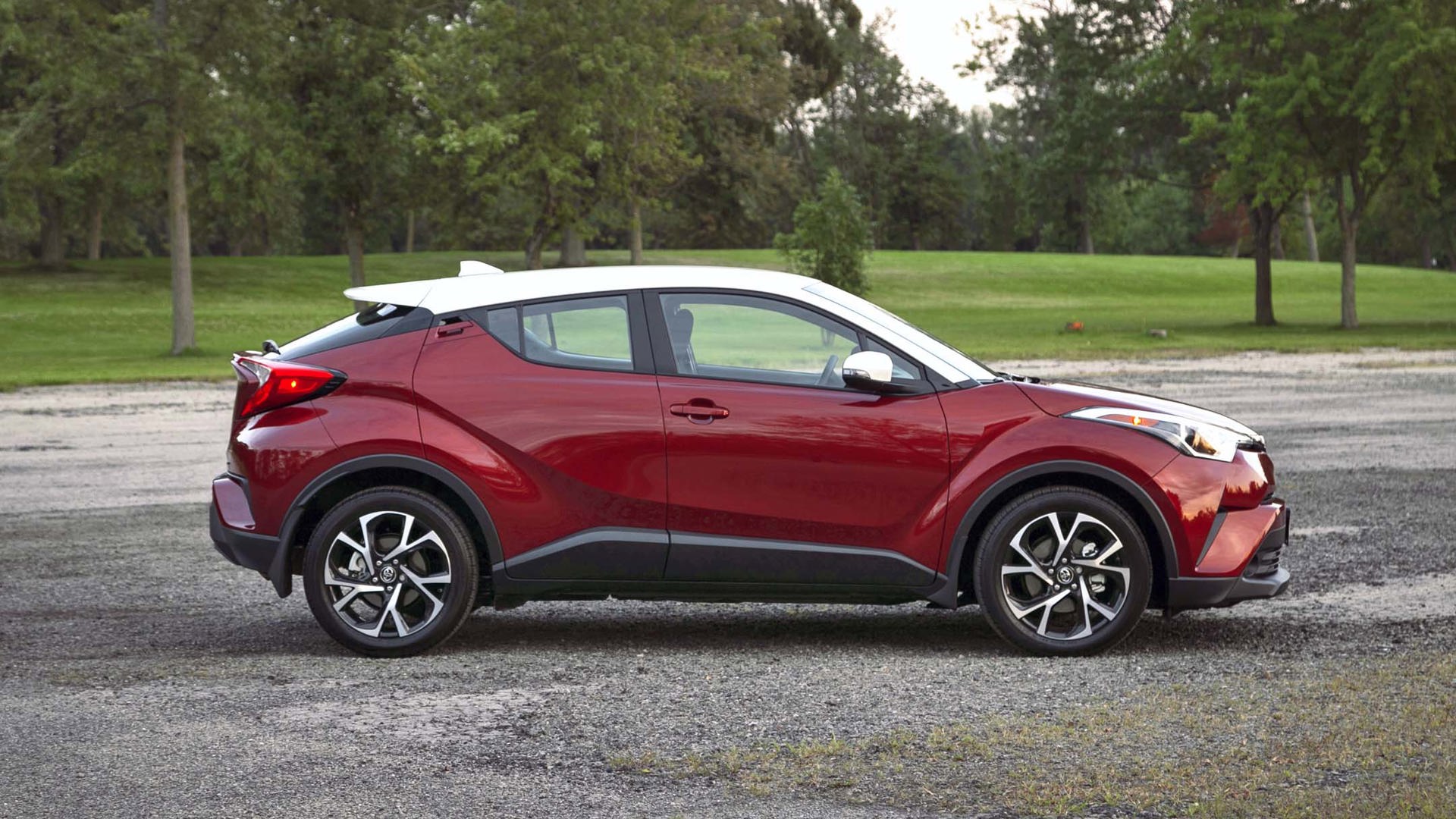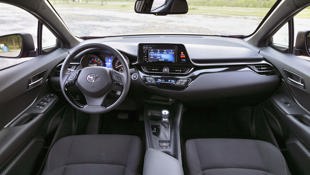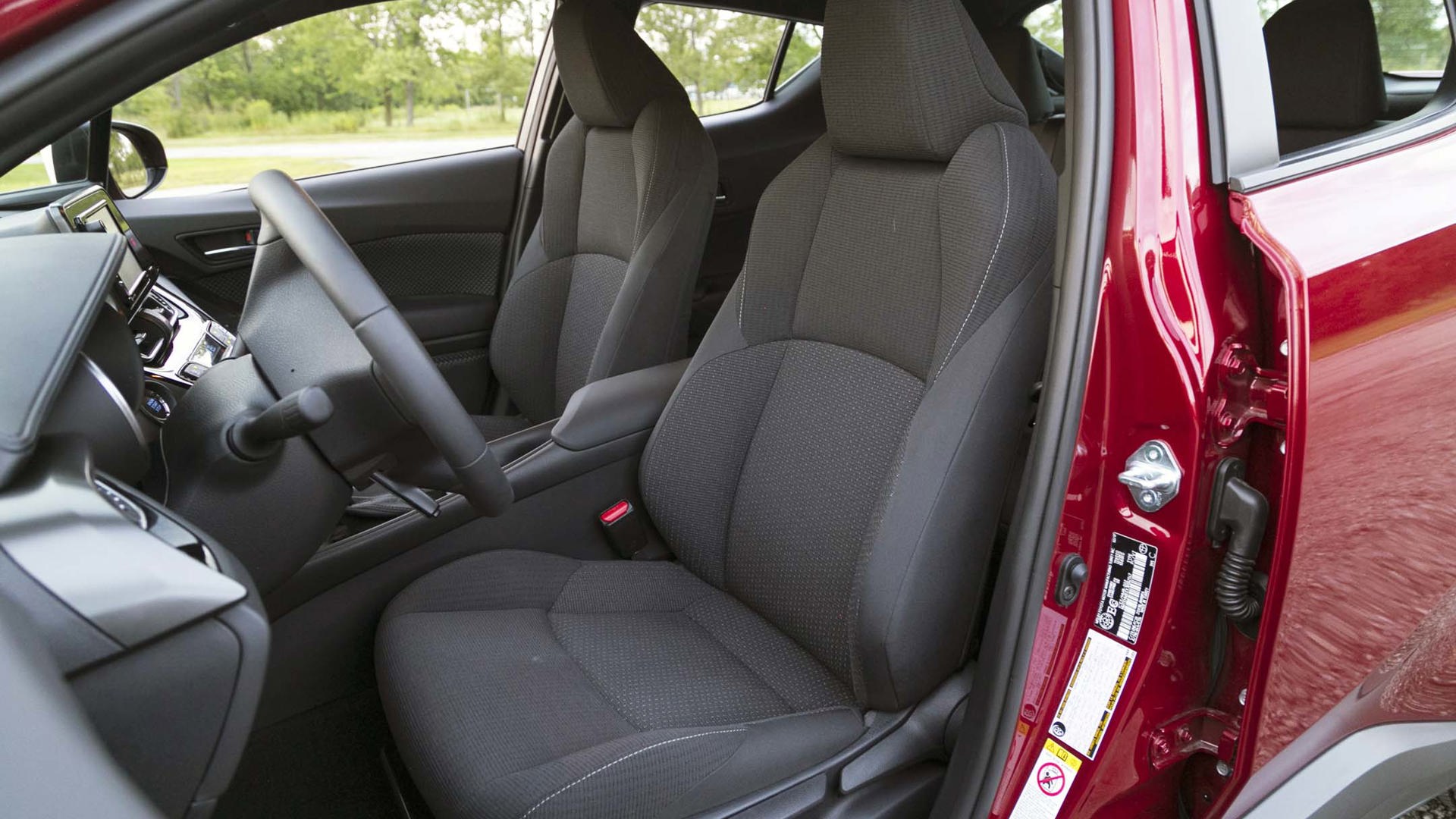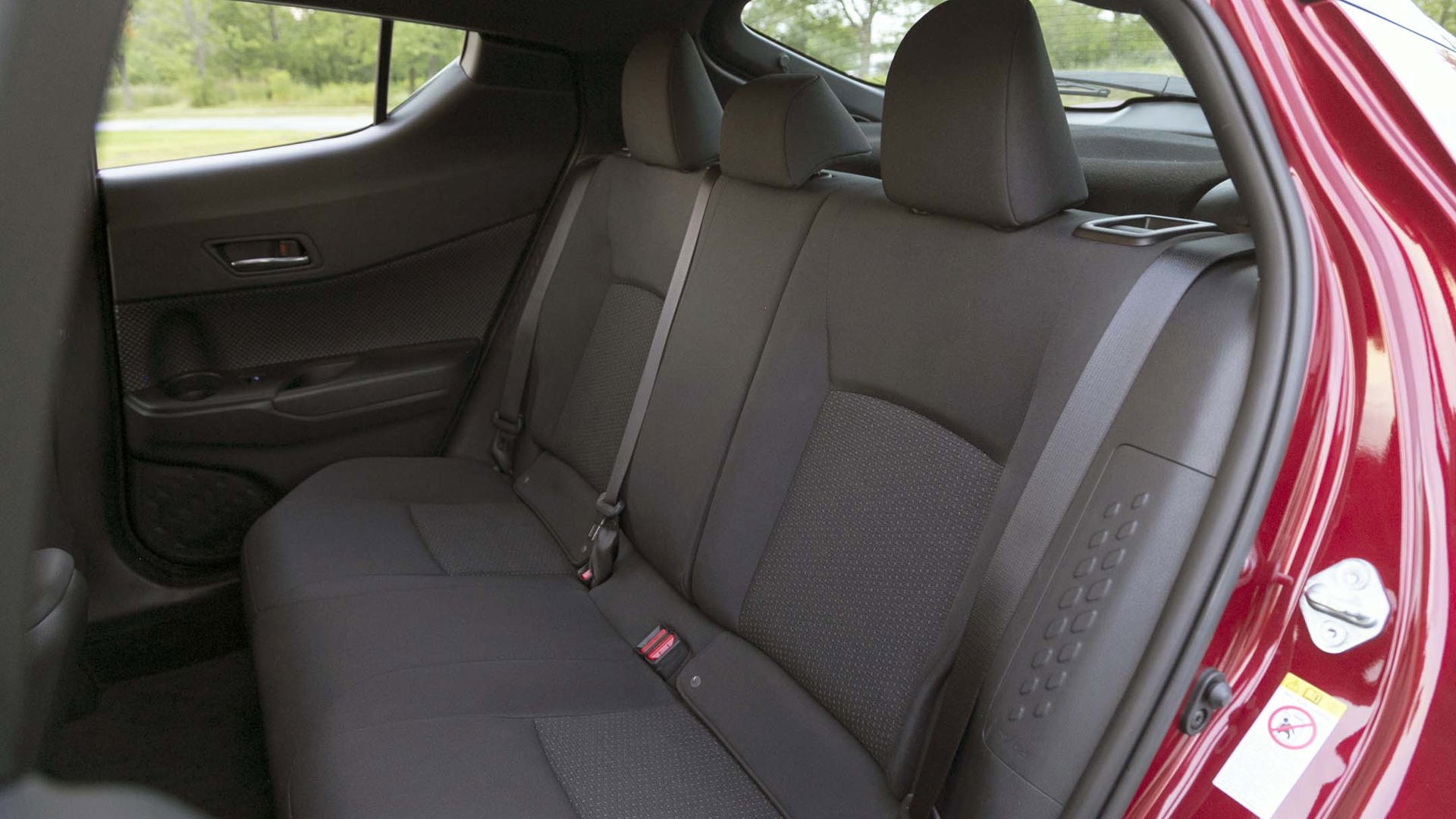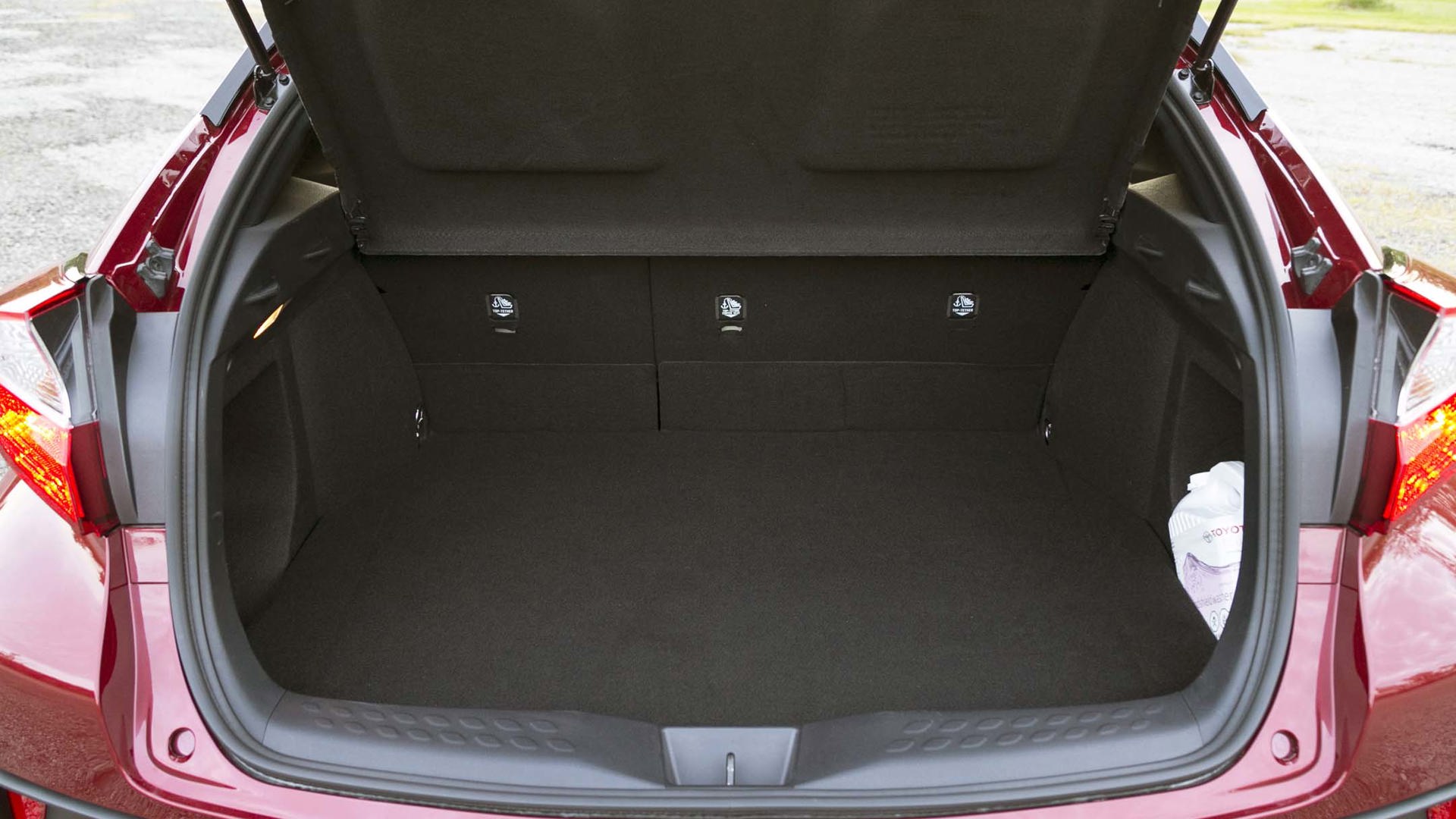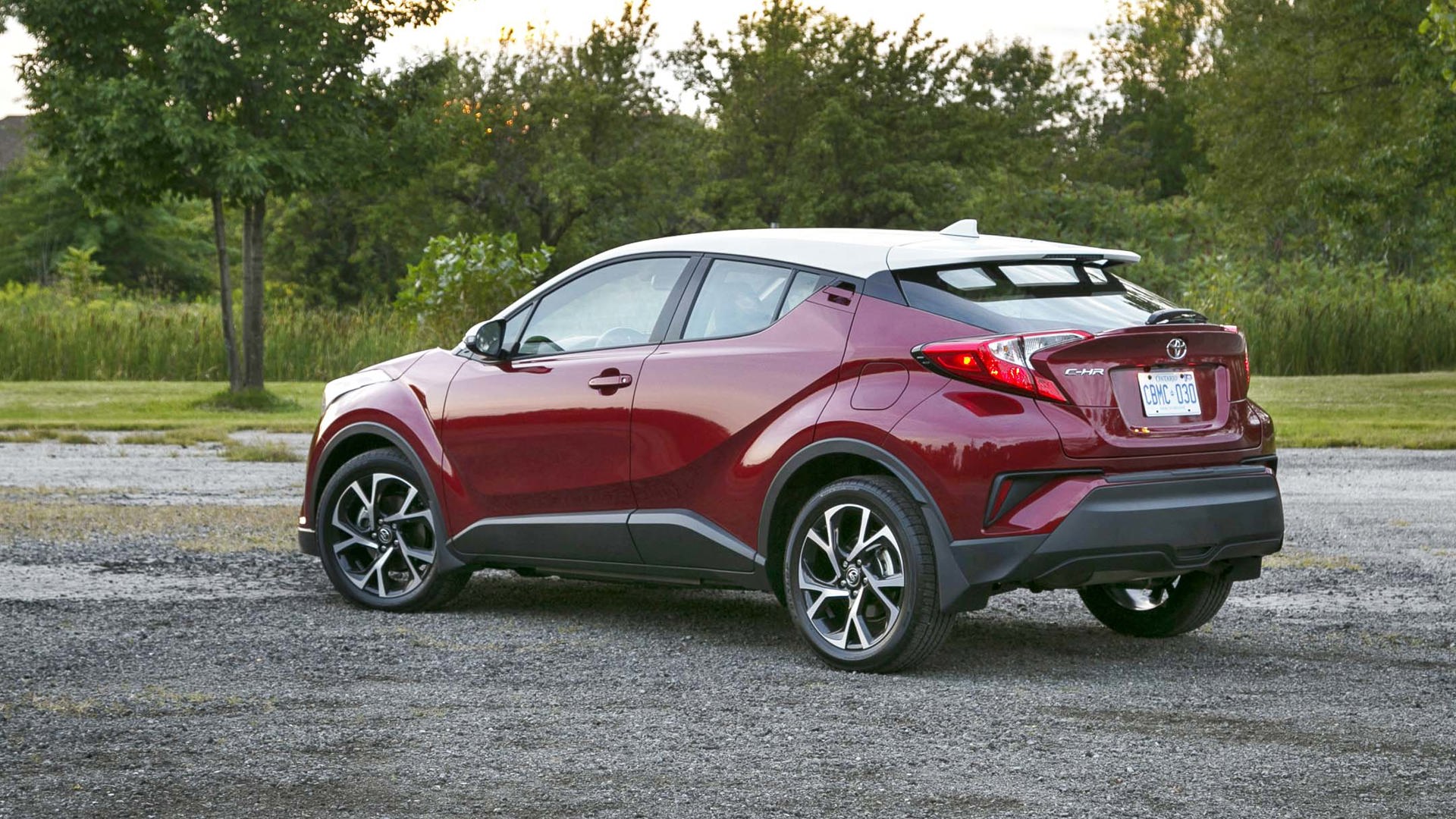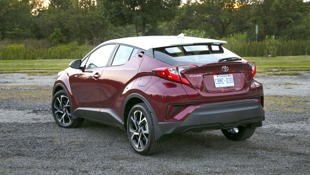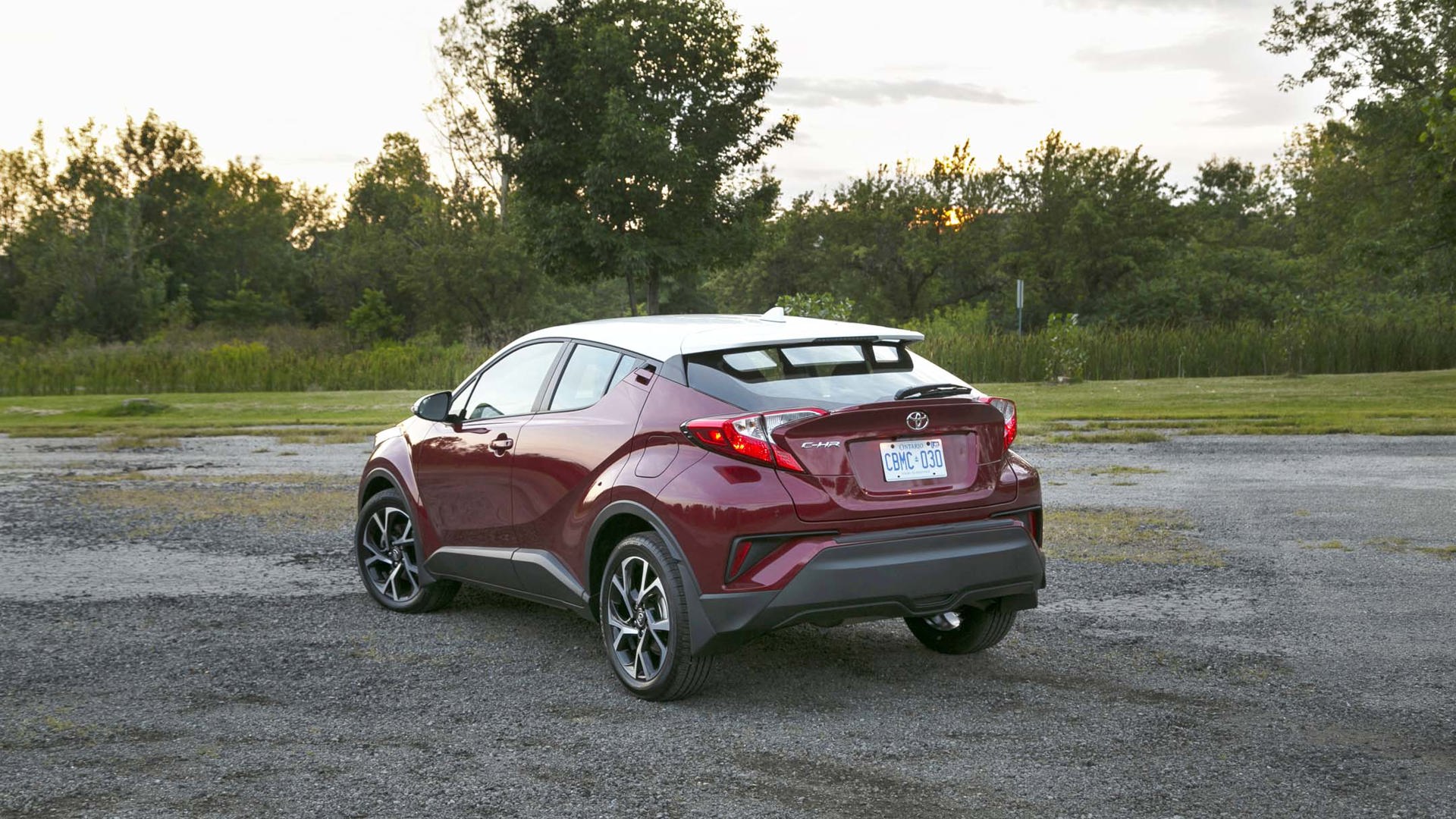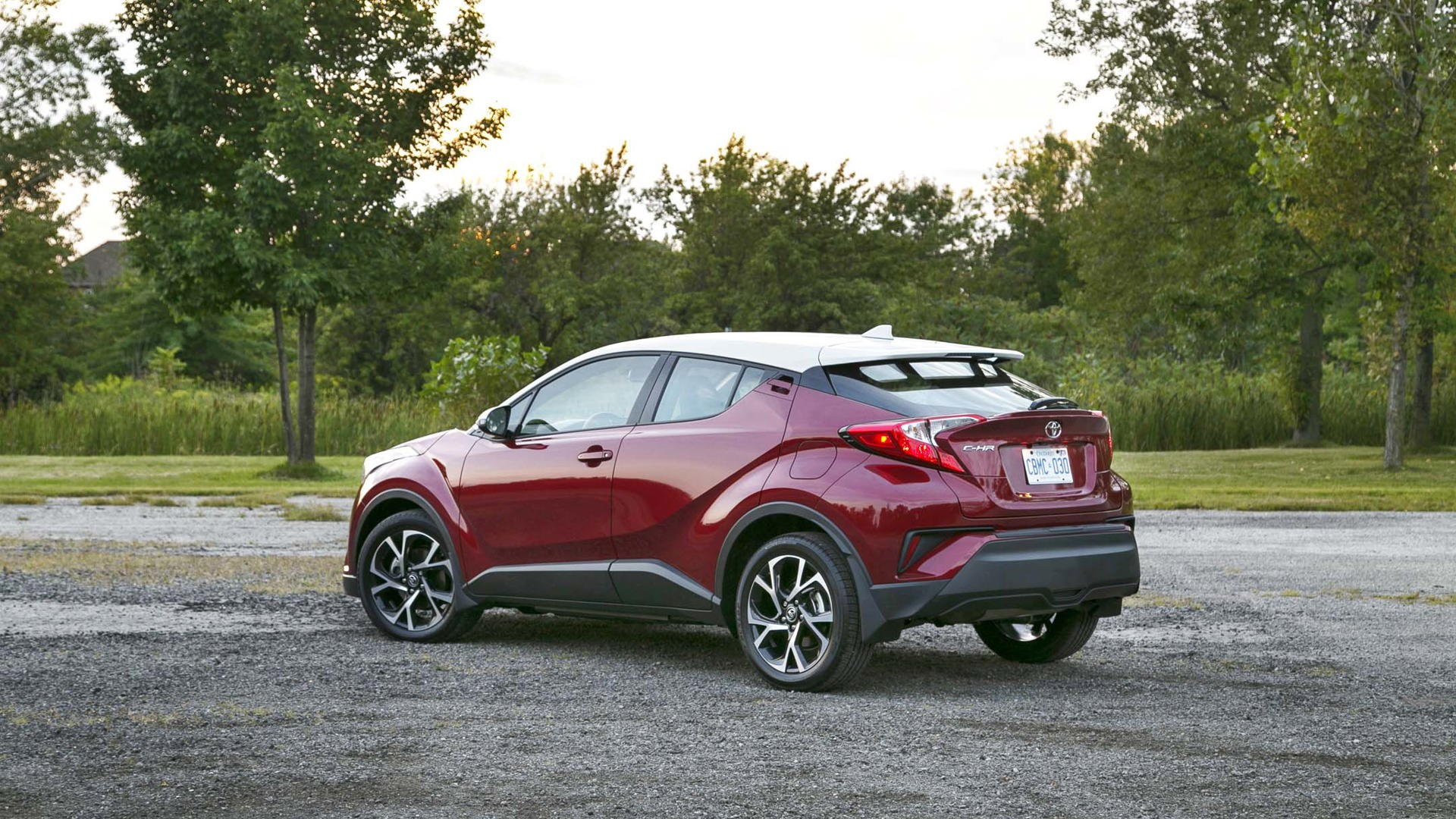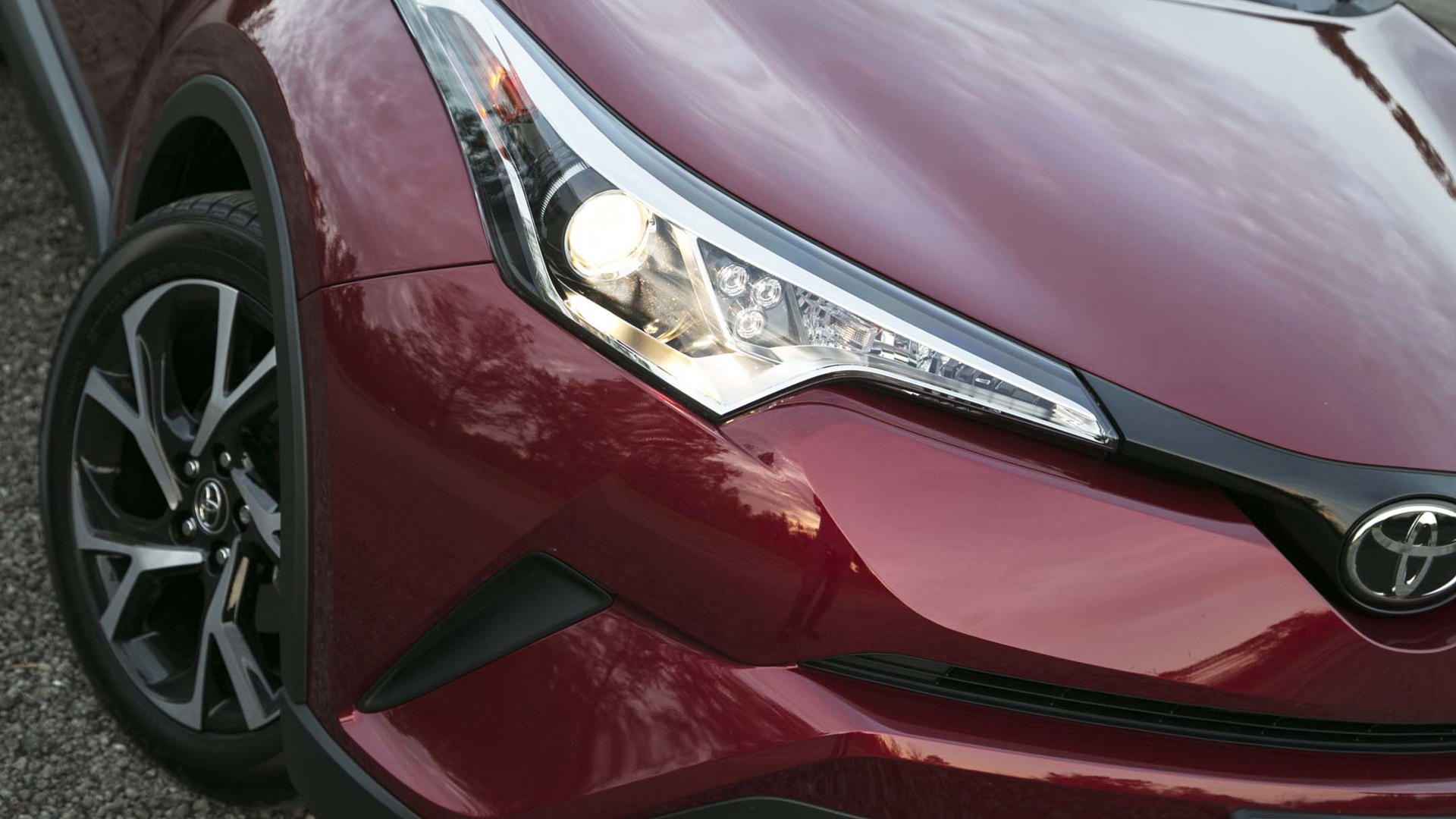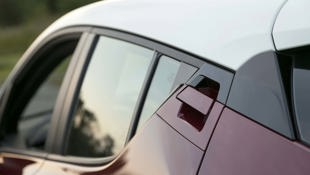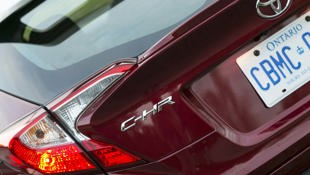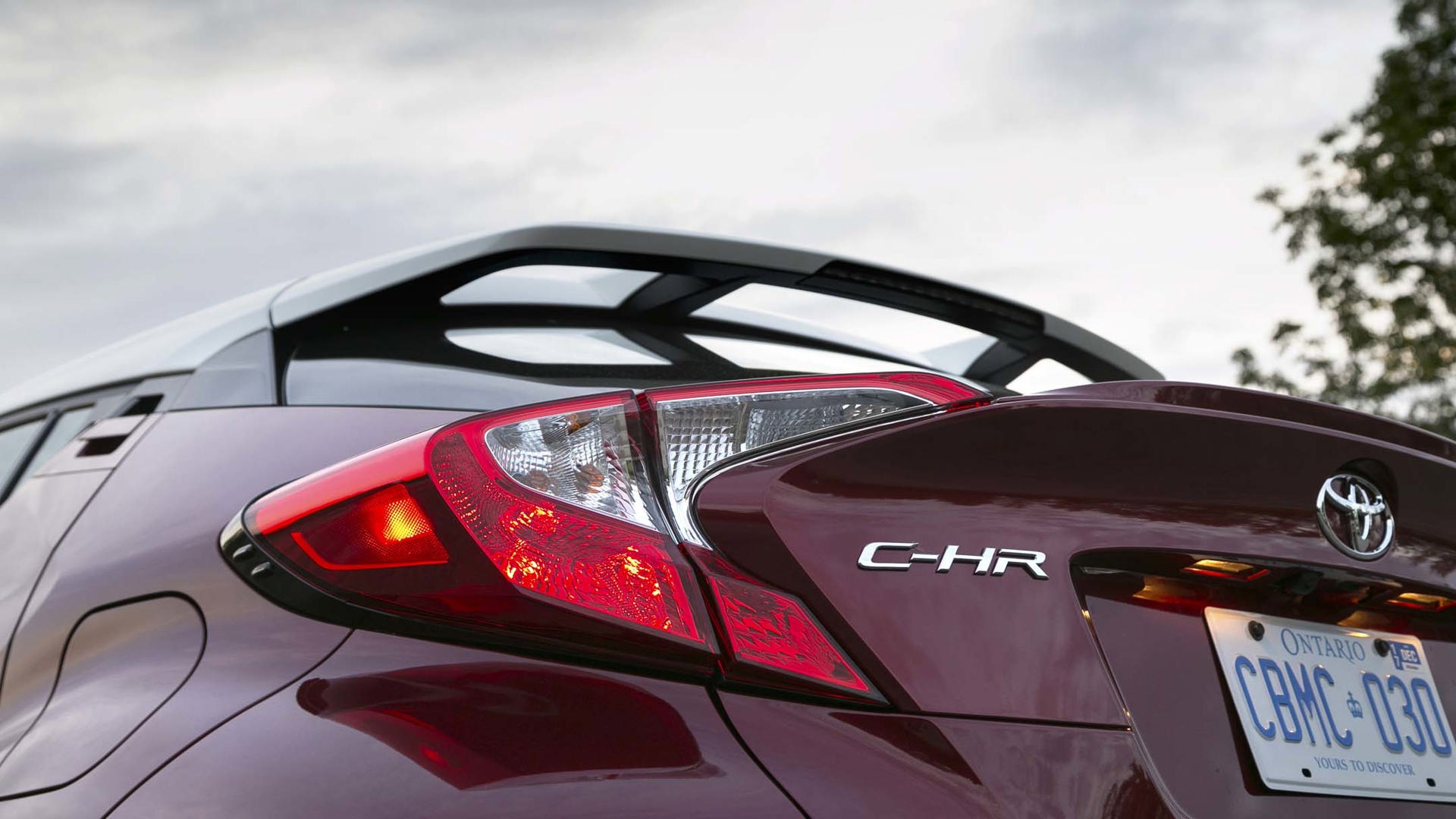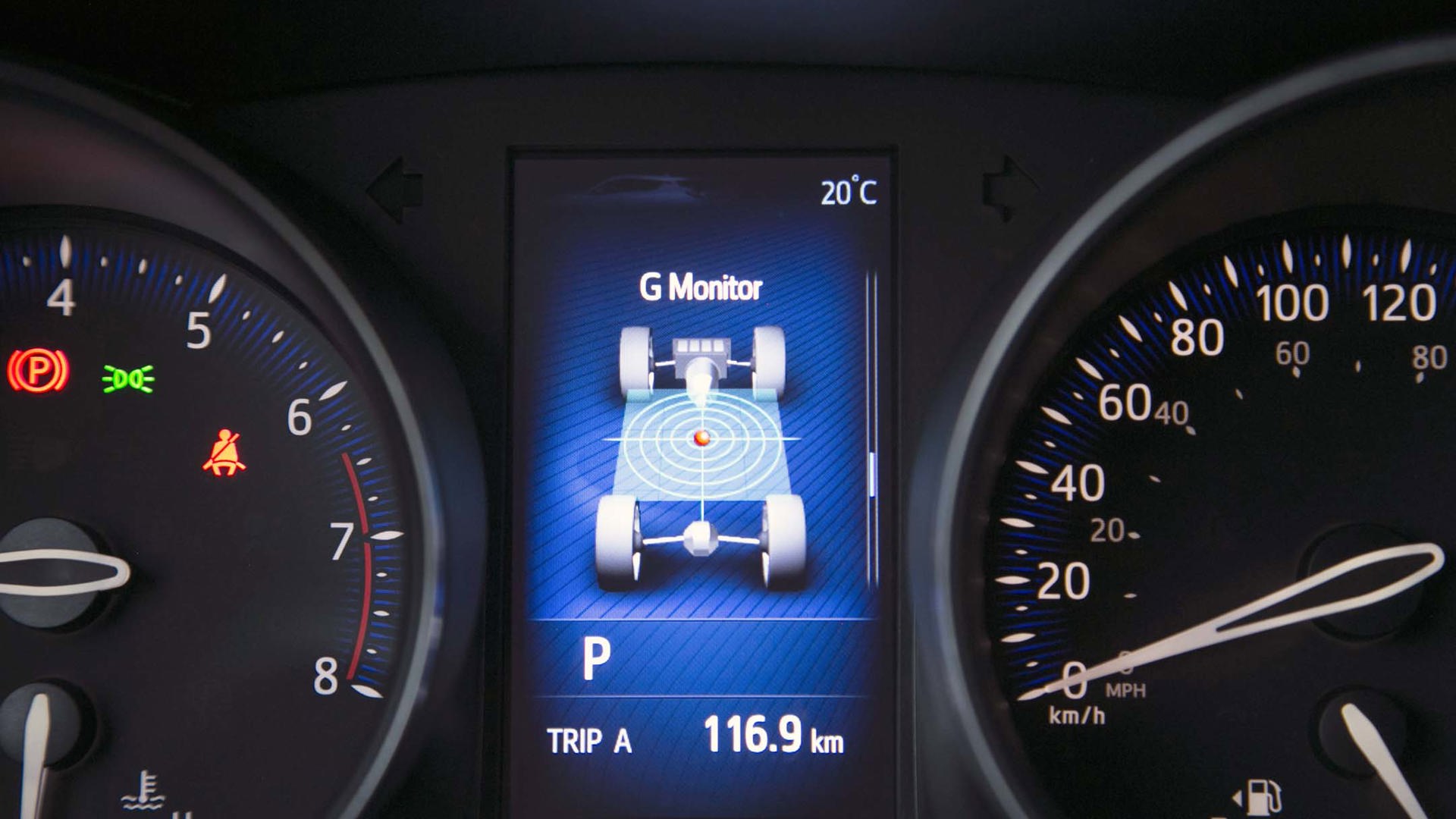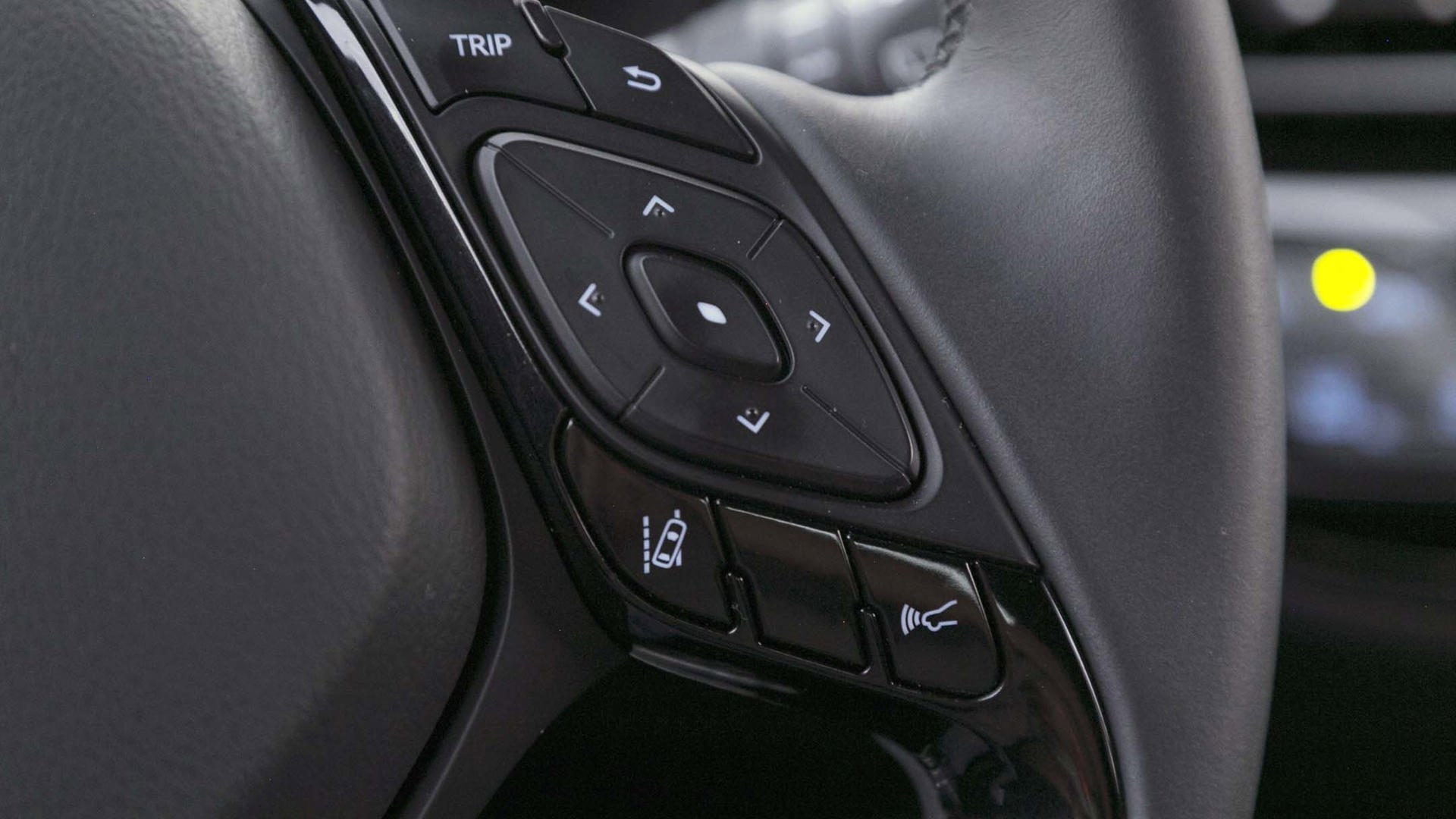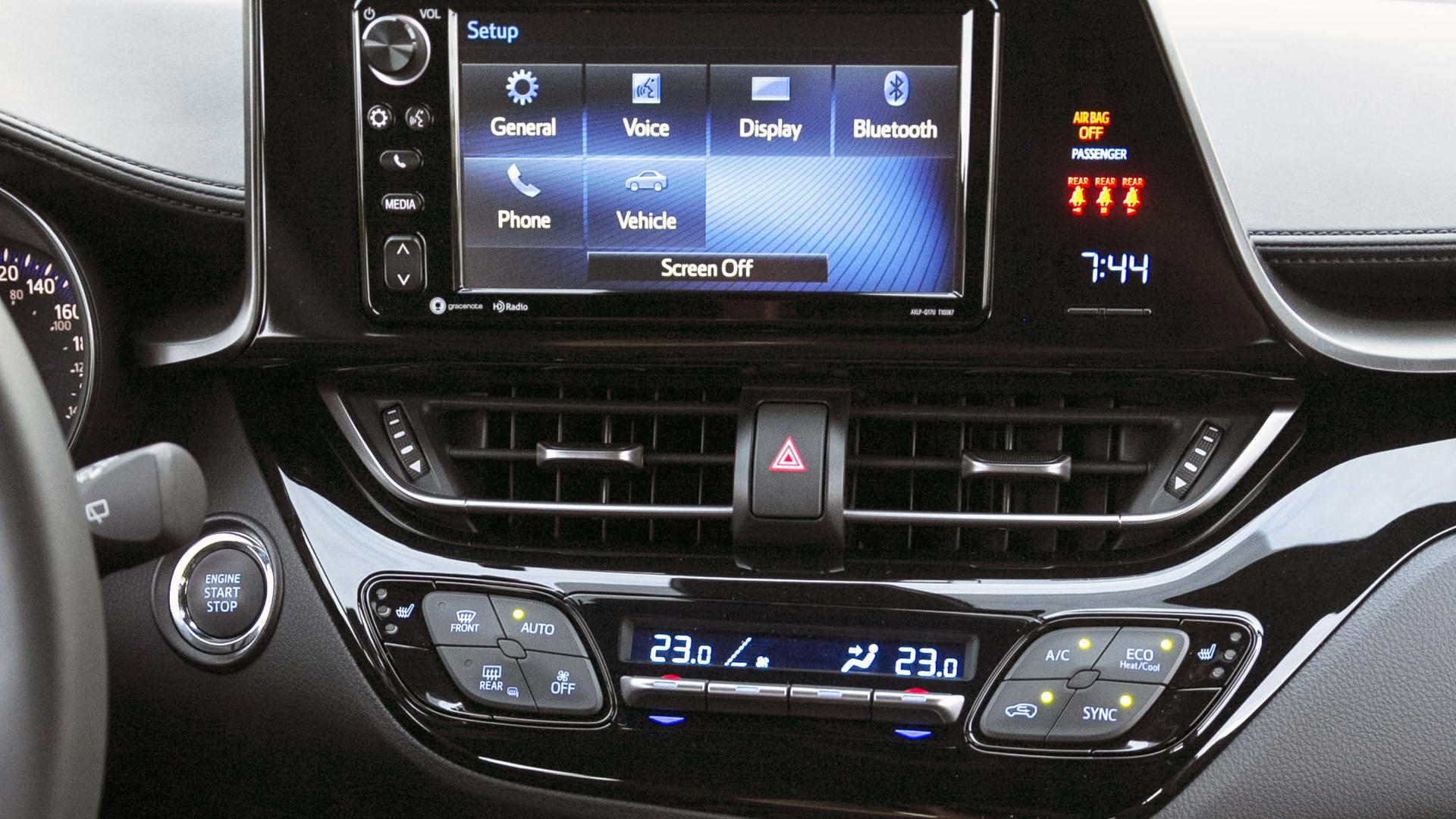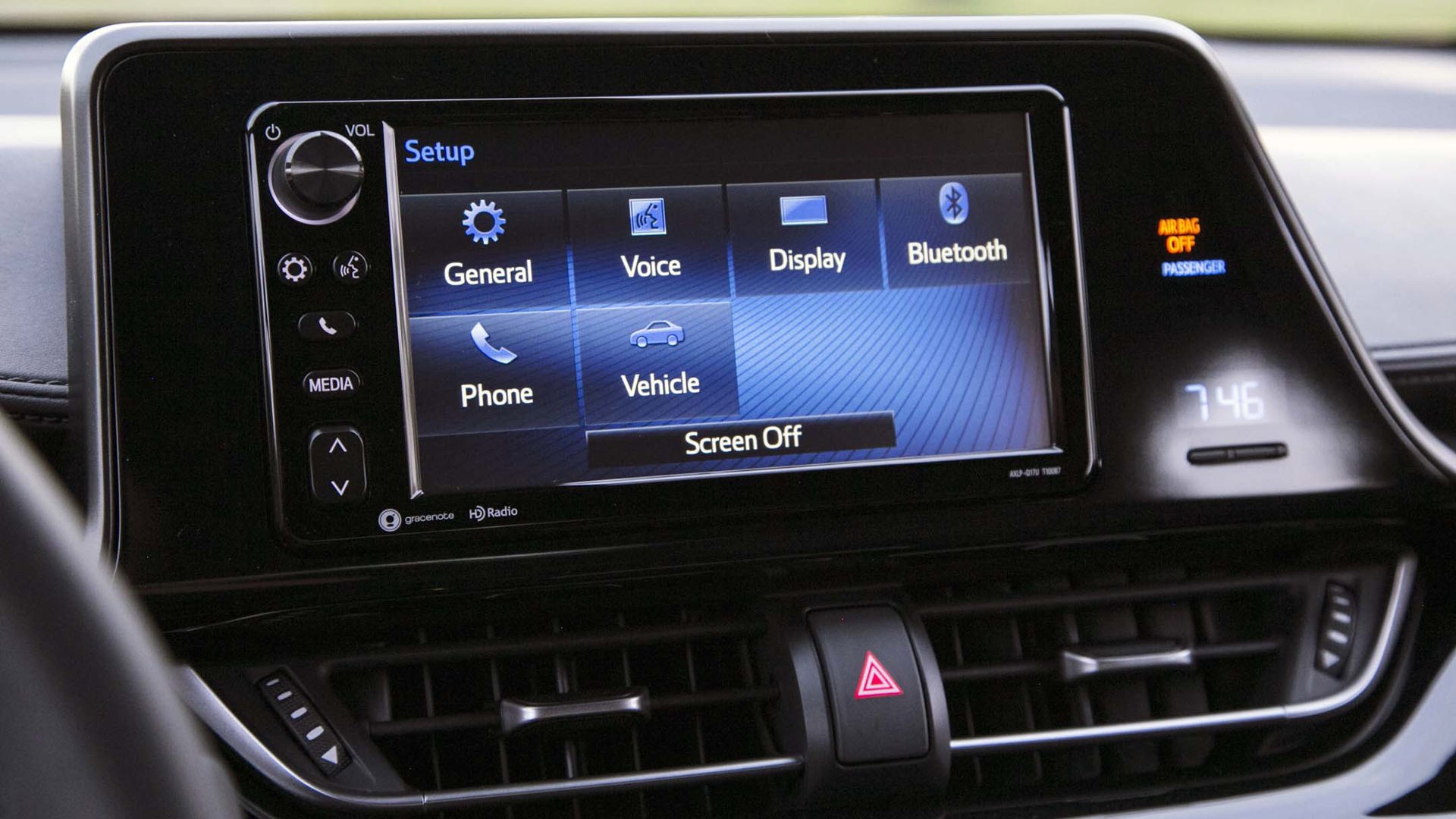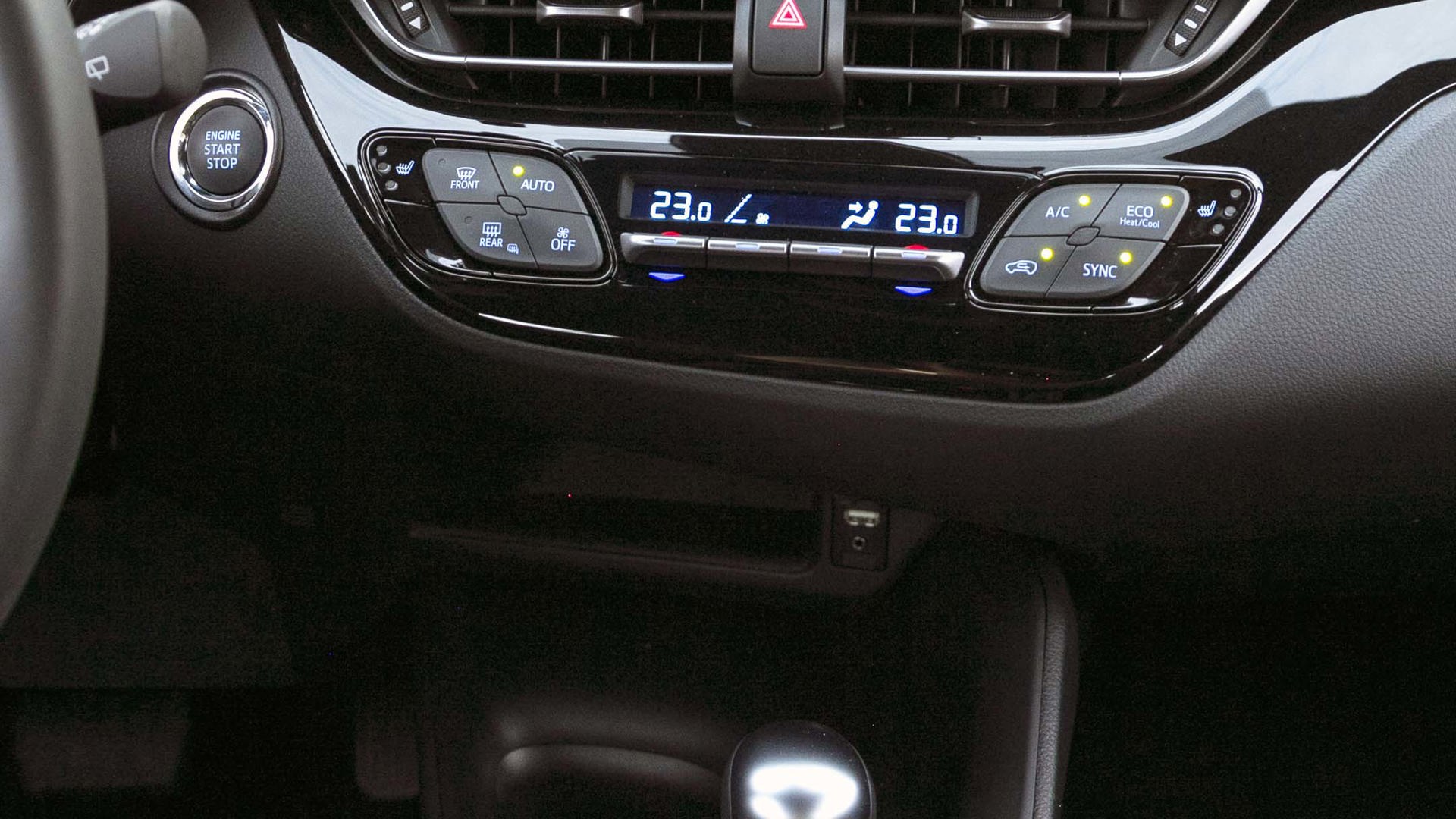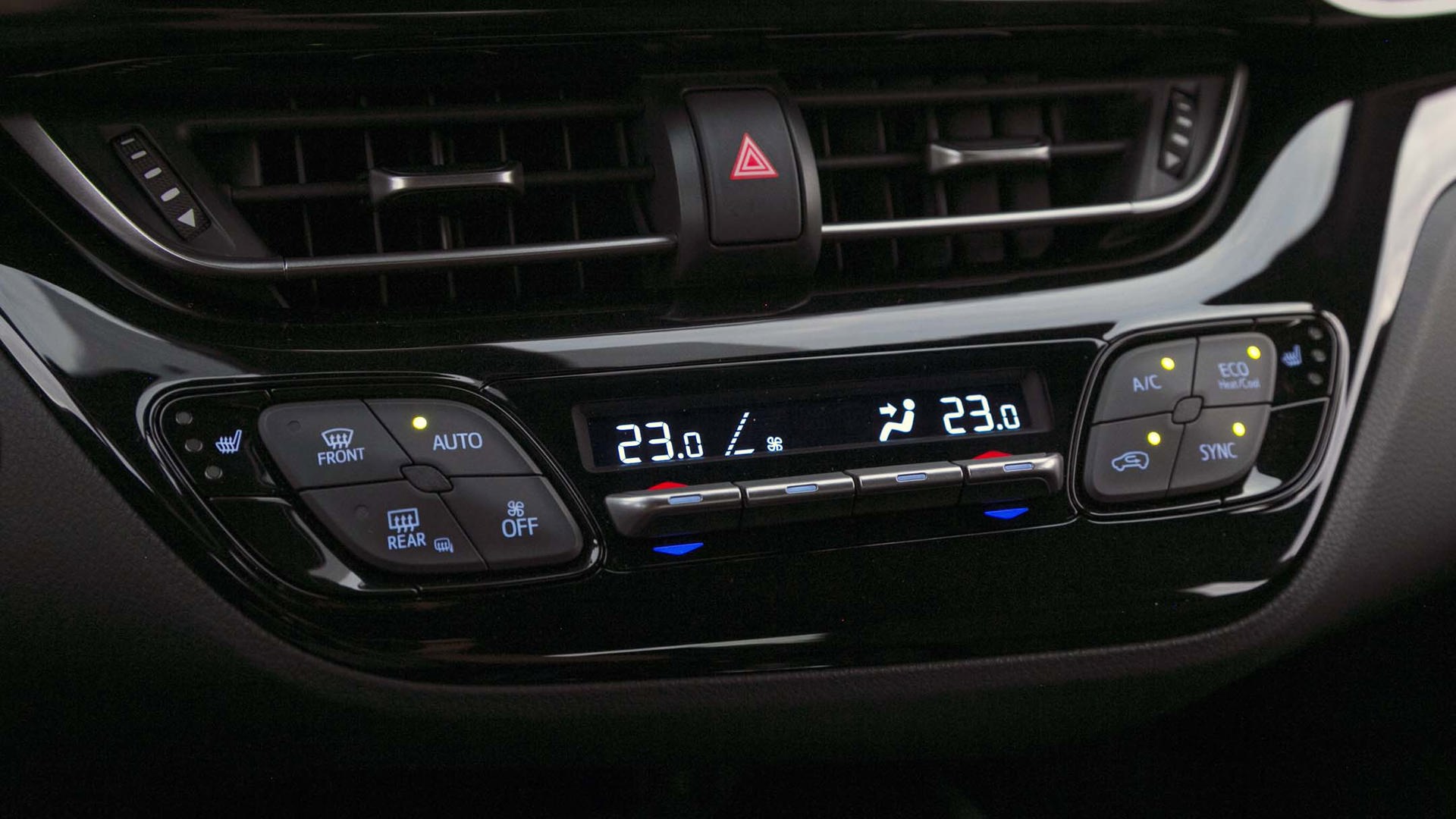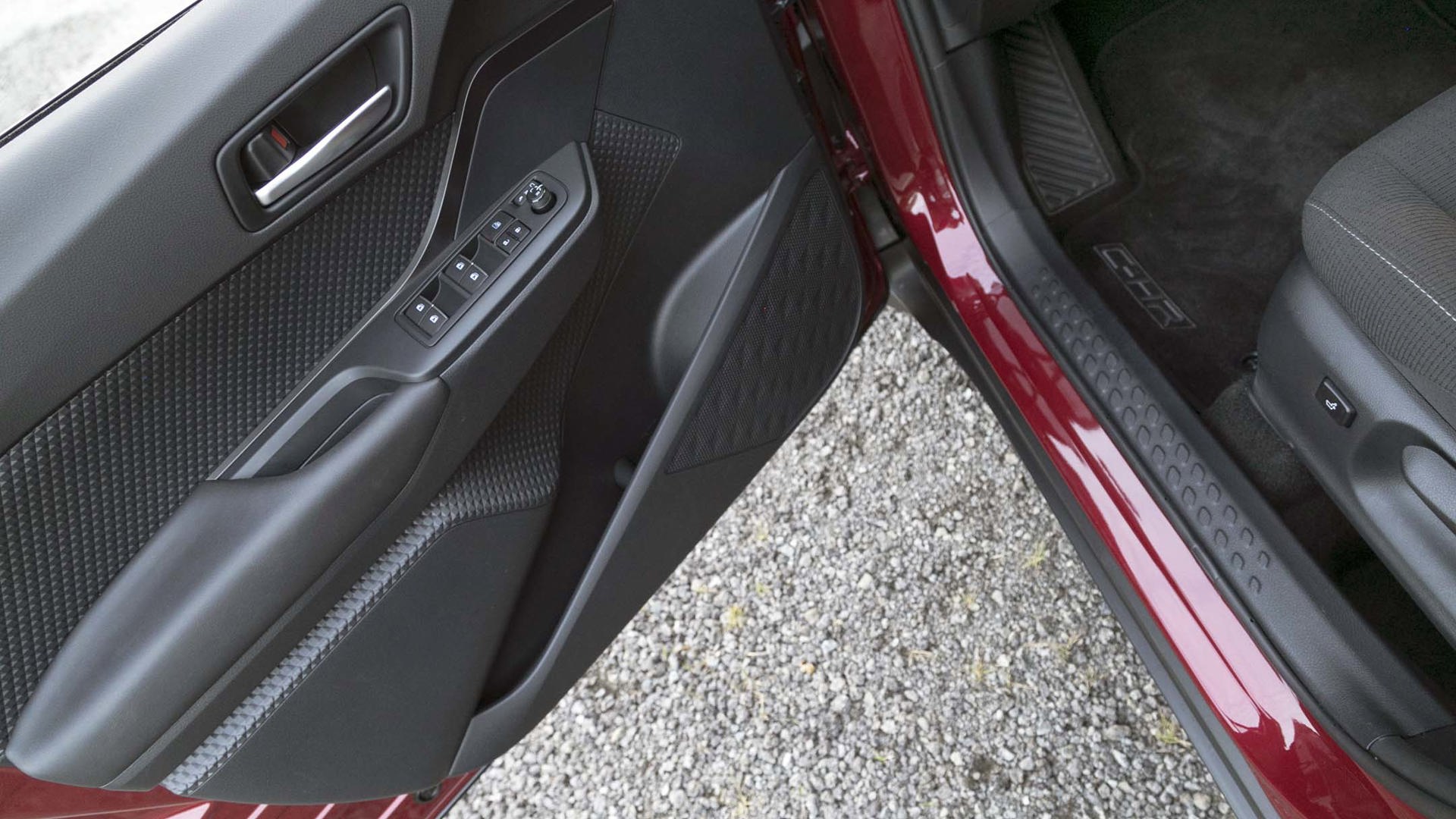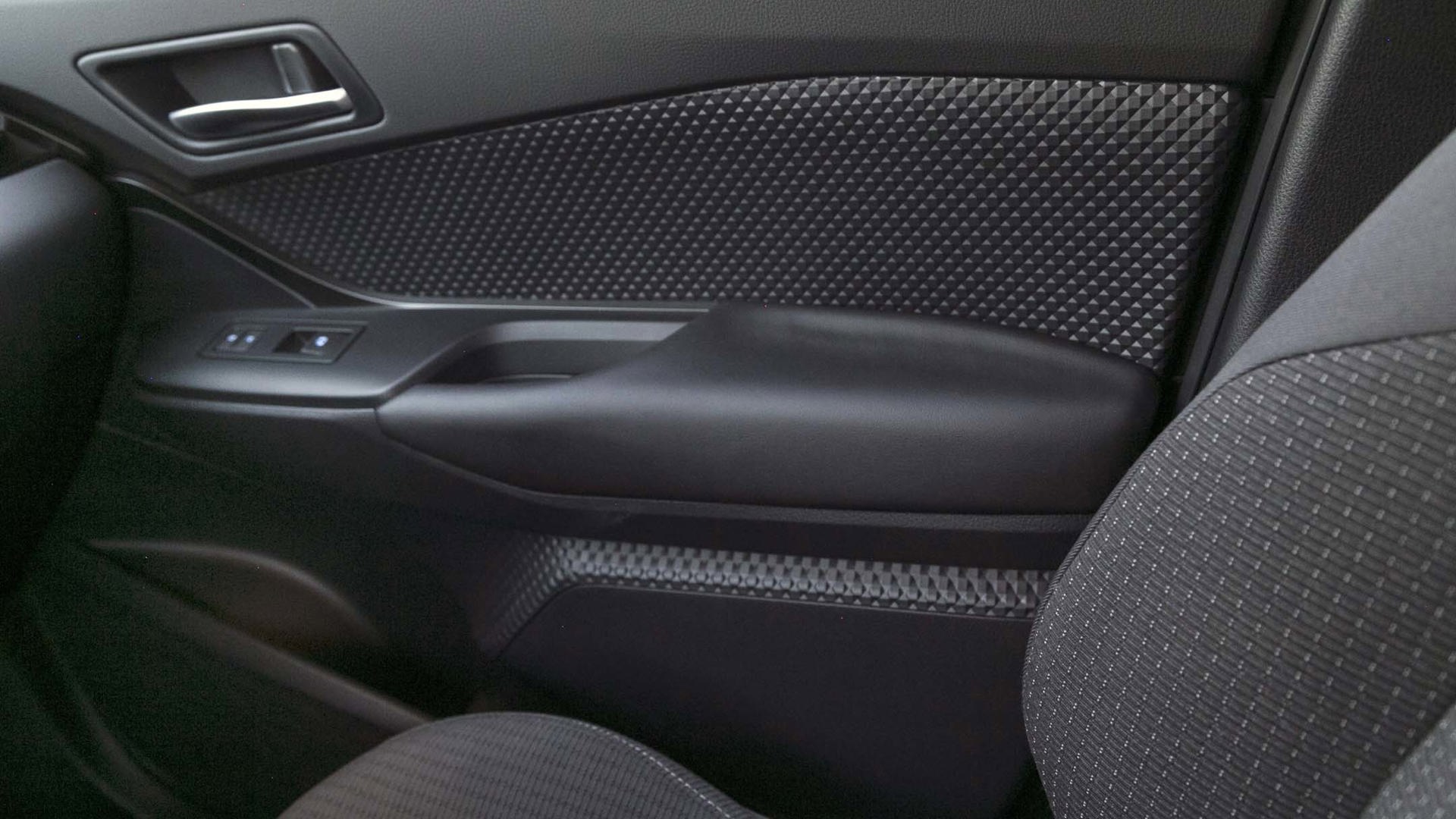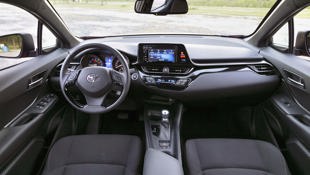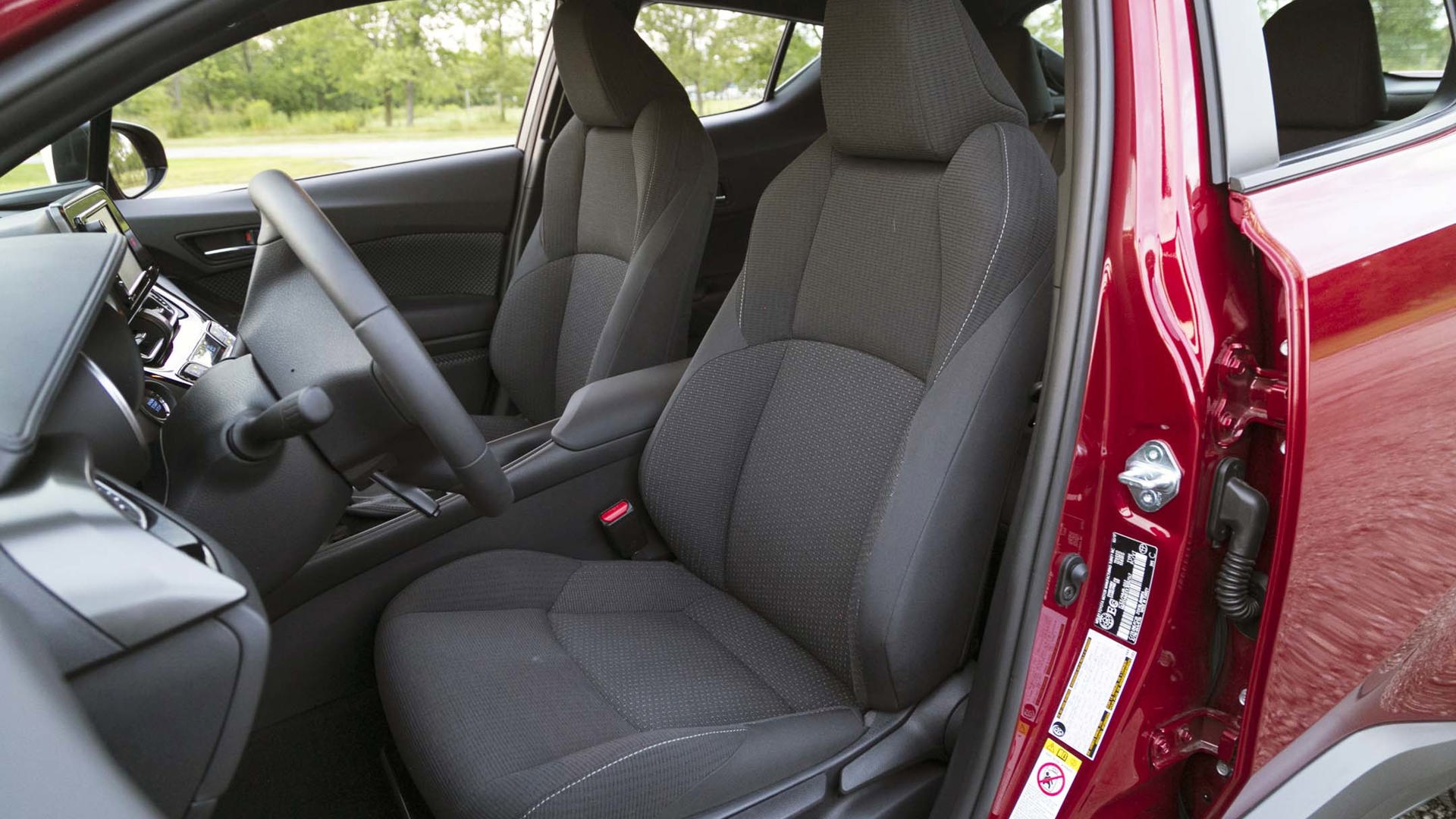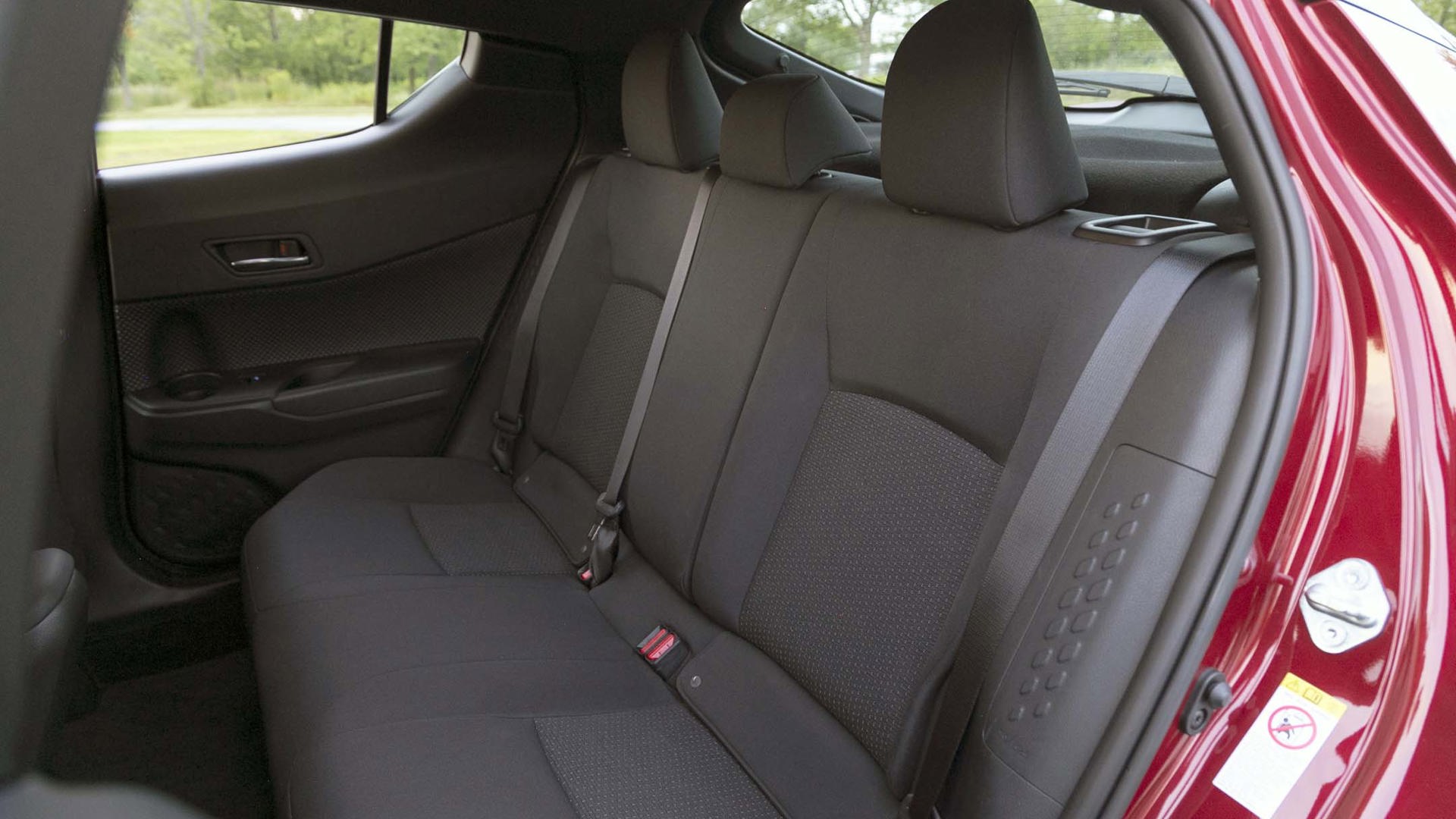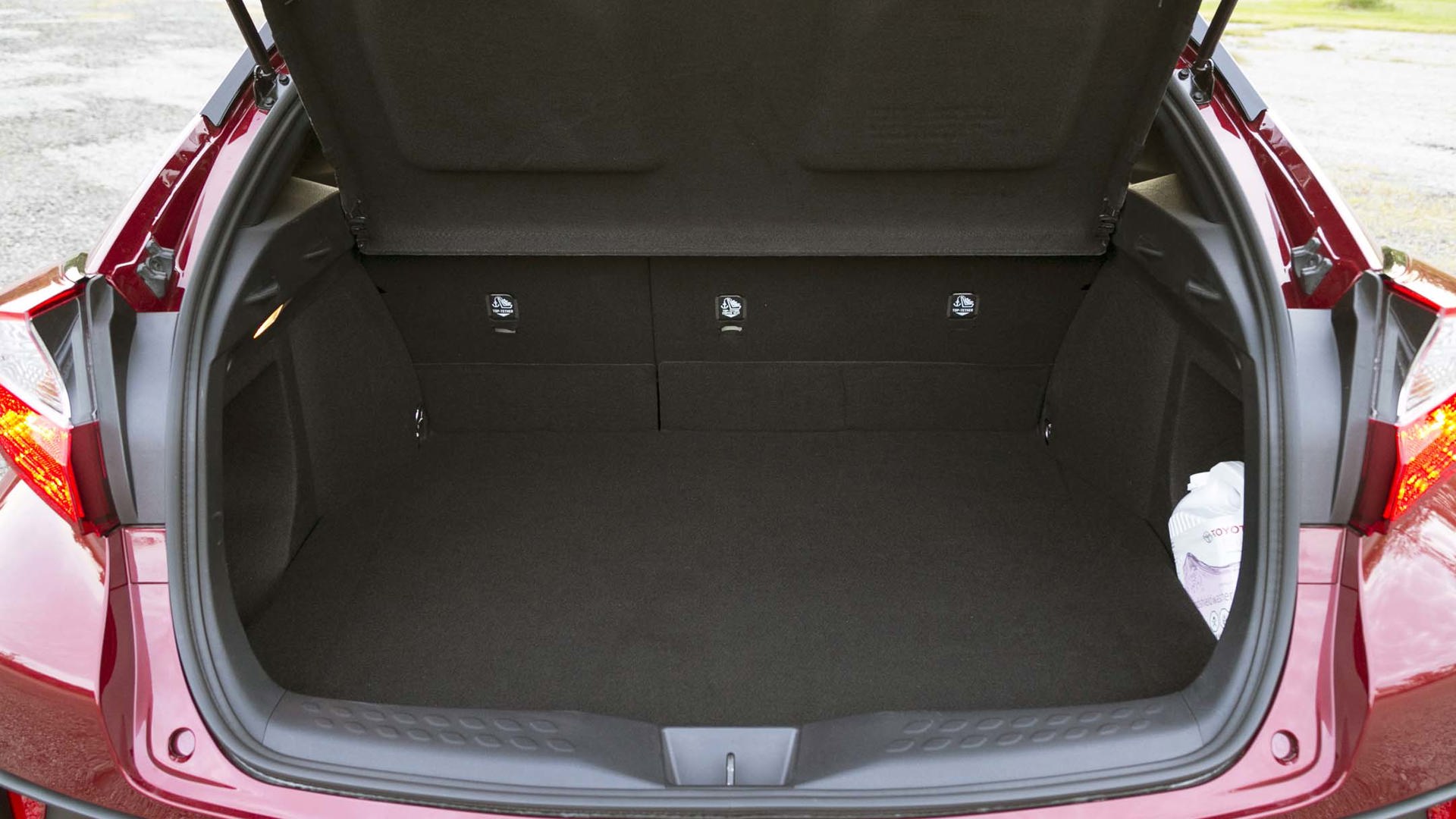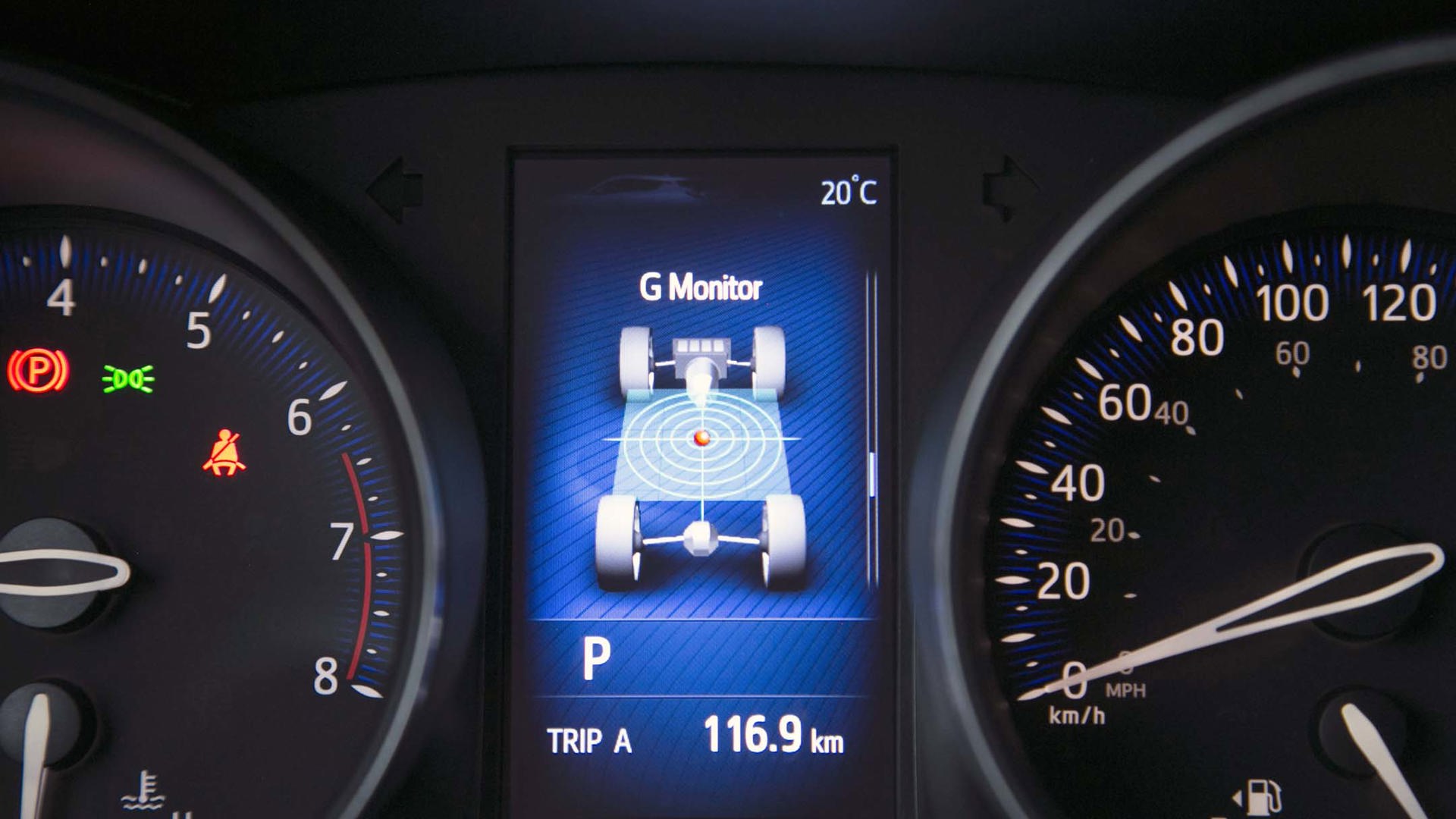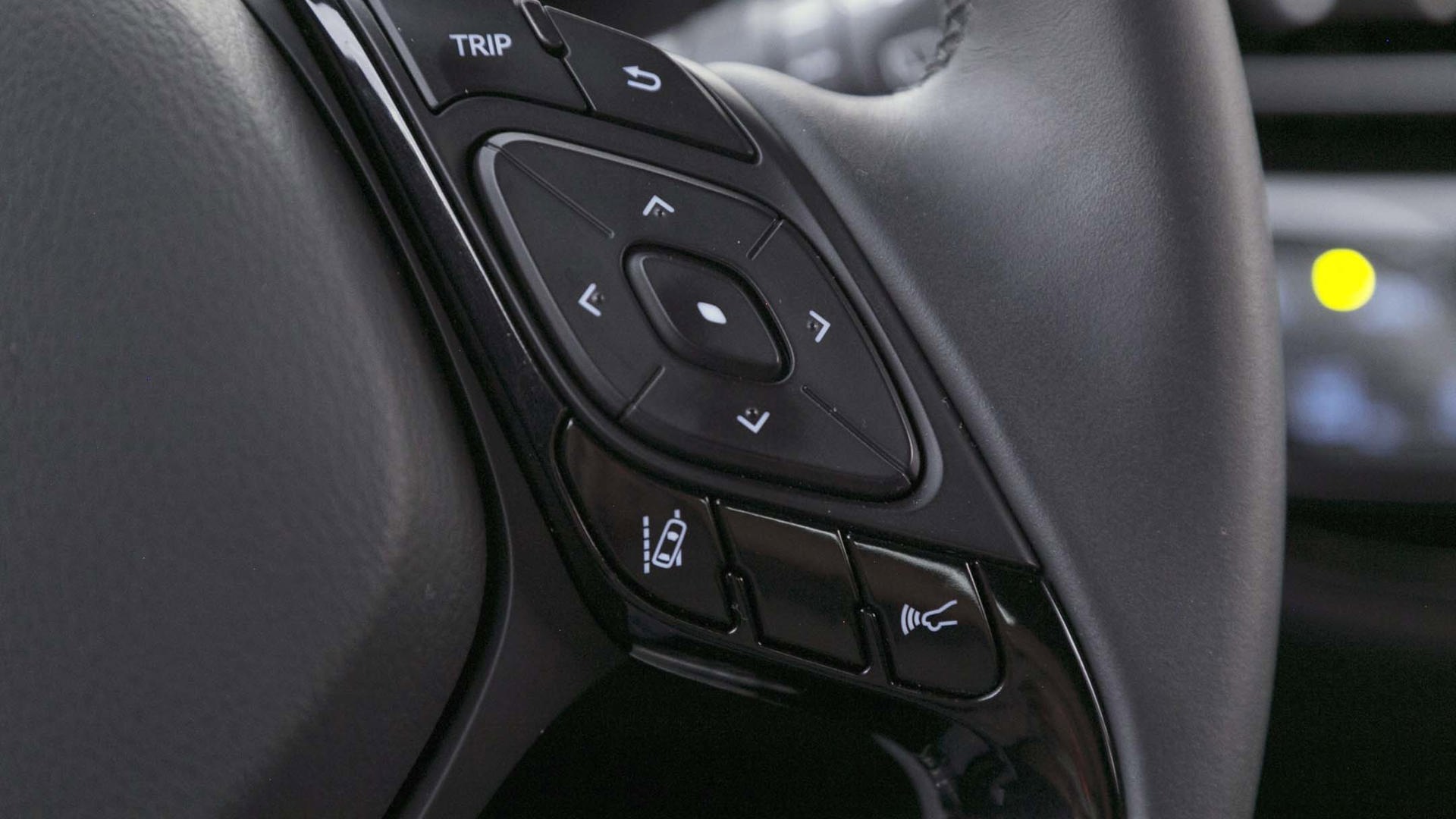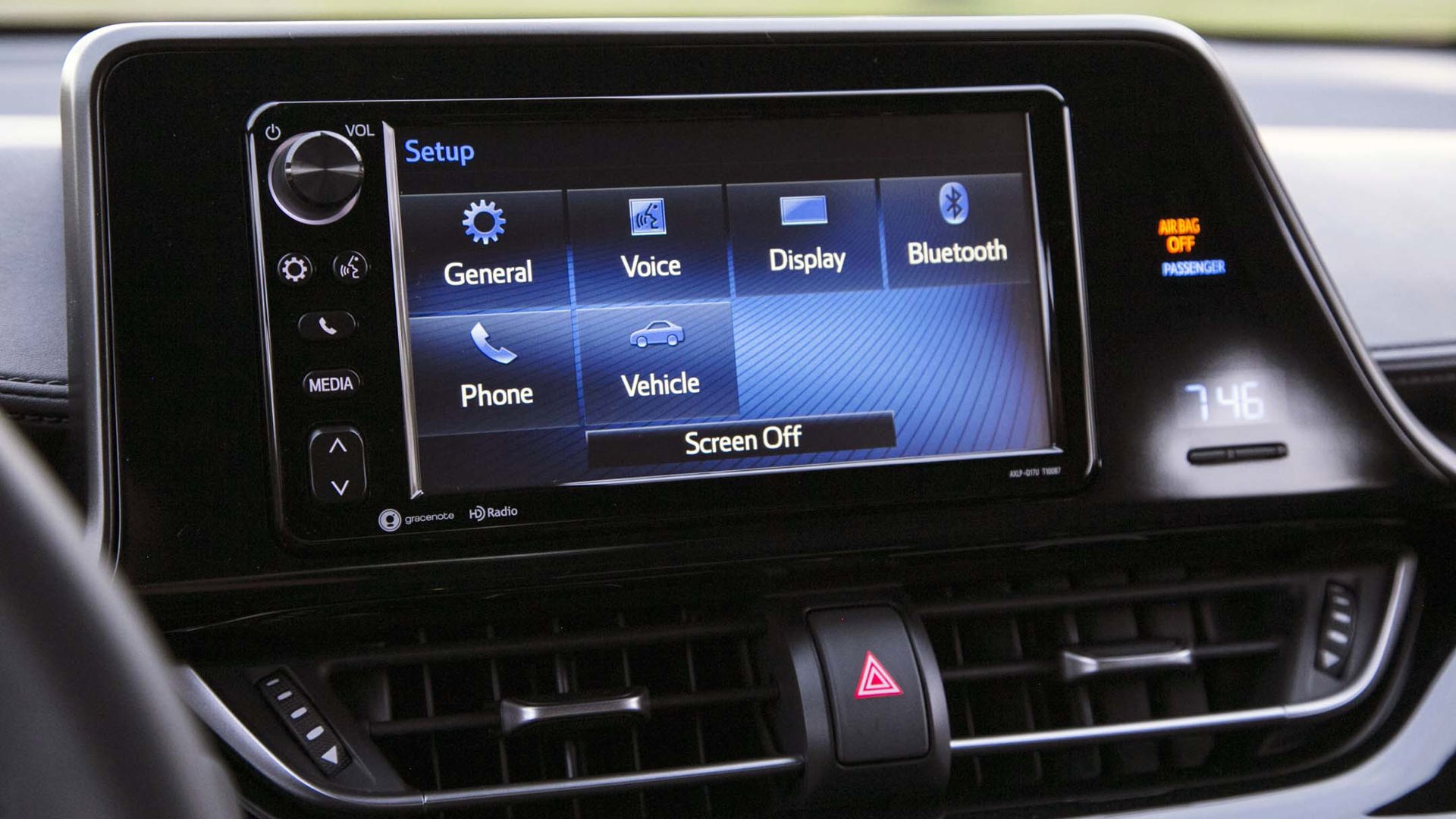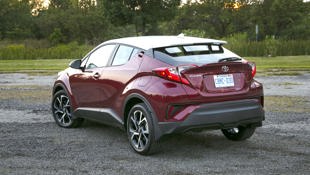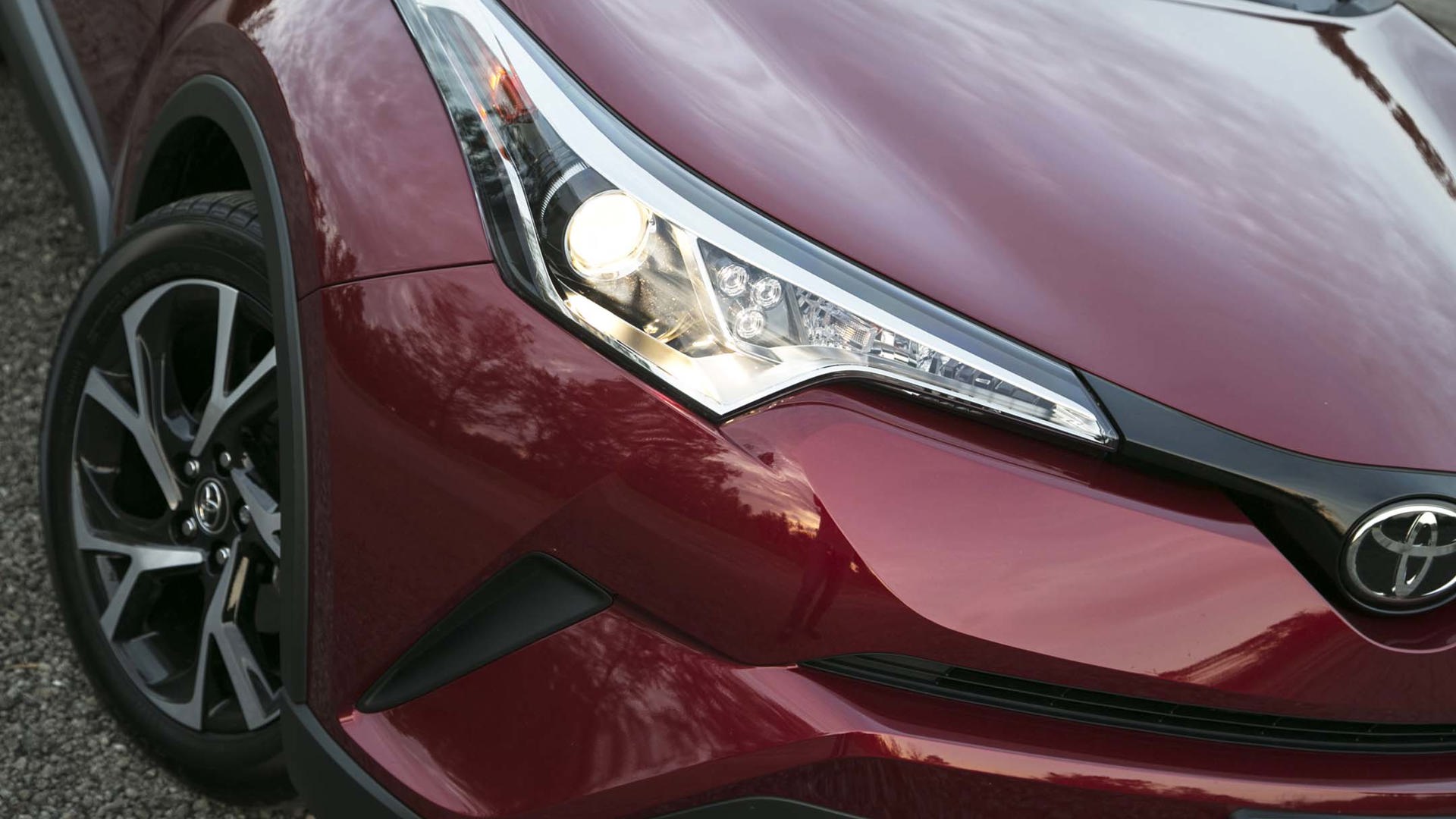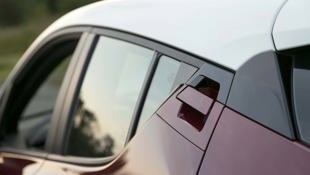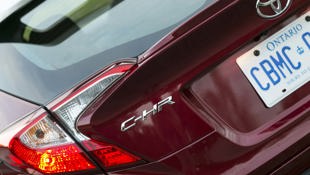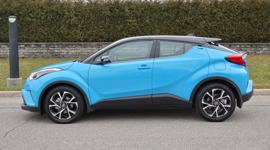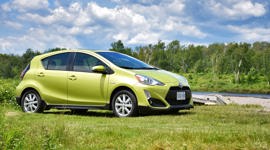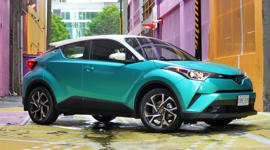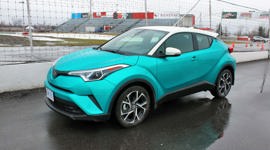 AutoTrader SCORE
AutoTrader SCORE
-
STYLING7/10
-
Safety7/10
-
PRACTICALITY7/10
-
USER-FRIENDLINESS7/10
-
FEATURES7/10
-
POWER6/10
-
COMFORT7/10
-
DRIVING FEEL6/10
-
FUEL ECONOMY7/10
-
VALUE6/10
People are strange, especially when it comes to showcasing their personal styles. While some stick ink-filled needles into their bodies, others poke holes in all sorts of places. There are even some folks who actually wear white after Labour Day. Shocking, I know, but it’s true.
Curiously, Toyota Canada is not bringing in the C-HR with all-wheel drive.
So we shouldn’t be surprised that Toyota’s new C-HR exists. For a youthful target demographic, the C-HR is a vehicular fashion statement bar none. Crossover SUVs are en vogue, and if it’s an urban-friendly subcompact size, so much the better.
After accumulating nearly 1,000 km in a new C-HR, I am convinced there are two reasons you would consider spending some hard-earned cash on it: 1) Toyota’s reputation for reliability or 2) Your wardrobe demands a funky-looking, jacked-up hatchback thingy.
Aside from that, well, there are a lot of competitive products that offer greater functionality, many of which still offer funky styling.
With a platform shared with the newest Prius, the C-HR is a lively handler. It’s stiff and nimble, and the steering isn’t half-bad (in an age of electrically assisted steering and tires designed for low rolling resistance, this is about as good as it gets in this class). The ride is pretty decent too and the brakes get the job done without issue, so no complaints there.
The drivetrain, however, does deserve some grievances. The 2.0-litre inline four-cylinder generates 144 horsepower at a lofty 6,100 rpm and 139 lb-ft of torque at 3,800 rpm. While not rocket-sled numbers by any stretch, they are mostly competitive in the class of subcompact SUVs we recently tested. But in the funky misfits category (that also includes the Kia Soul, Mini Cooper 5 Door – and the now-discontinued Nissan Juke), the available turbocharged mills in each of them make for torquier, more engaging drives.
Adding insult to injury, Toyota offers the C-HR only with a CVT transmission that forces the four-banger to groan and moo as the little ute slowly works its way up to highway speeds. Passing requires patience and careful planning, and long, uphill climbs demand a heavy throttle foot.
Curiously, Toyota Canada is not bringing in the C-HR with all-wheel drive, which seems like a colossal oversight in a market that has recently been bombarded with the perceived safety and traction benefits of having all four corners powered (regardless of whether or not we actually need AWD).
With no all-wheel-drive hardware to lug around, the C-HR weighs in at 1,497 kg, which is still between 100 to 150 kg heavier than the Kia or Mini competitors. Fuel efficiency is pretty close between the three of them, with the Toyota earning government figures of 8.7 L/100 km city, 7.5 highway and 8.2 combined. The Mini 5 Door with its three-cylinder turbo averages about a half litre per 100 km better overall.
The C-HR’s tidy dimensions make it easily fit into confined urban driving scenarios, and its agreeable steering means it’s eager to zip around potholes and parking lot abutments. Forward vision is very good too, but the rear three-quarter and rear visibility are significantly hampered making both blind-spot checks and backing up tricky. This is the price one pays for groovy styling. And as drivers become increasingly dependent on back-up cameras to help them park, the C-HR’s miniscule affair embedded inconveniently into the rear-view mirror is barely worth having.
The strange rear-view camera application is just one of the odd technological choices Toyota has made with the C-HR.
Toyota has made their Toyota Safety Sense suite of tech goodies standard equipment, even on very affordable machines. This means the C-HR comes standard with goodies – like auto high-beam control, dynamic radar cruise control, lane-departure alert and steering assist, and pre-collision braking – that are often found on very pricy machines.
This commitment to active safety features on low-priced machines is highly commendable. But Toyota has neglected to pay attention to another high-tech area that’s growing daily in importance to consumers: the infotainment system.
Atop the centre dash is a seven-inch touchscreen with dated graphics, dull backlighting, and a frustrating response rate. No GPS navigation is offered at all and Toyota has not incorporated Apple CarPlay or Android Auto – two leading connectivity systems that are sure to be a make-or-break scenario for many of the potential millennial-generation shoppers the C-HR is targeting.
Aside from that gaffe, the rest of the interior is well-sorted. The design is contemporary yet functional with buttons close at hand for the dual-zone climate control, and steering wheel functions to manage audio and the information portrayed on the small display between the large, round tachometer and speedometer.
Although finished in fairly cheap-looking upholstery, the front seats are very comfortable, drawing no complaints even after a 700 km day of driving. The rear seats are flat and firm, but space is surprising, once passengers have ducked under the sloping roofline and climbed in. That said, sufferers of claustrophobia would do well to stay out of the back of the C-HR, with its confining, tiny window openings.
The cargo hold is also small for what should be a practical hatchback.
Our test C-HR was fitted with the $1,600 Premium Package, which adds the attractive 18-inch wheels seen in the photos, power-folding mirrors, push-button start and a blind-spot monitoring system. For that last item alone, it’s worth considering this package. The only other available upgrade is the $795 premium paint option – in this case the white roof over the gorgeous Ruby Flare Pearl paint.
Added to the base price of $24,690, that single option package keeps the C-HR competitively priced, although the Kia Soul comes with more features for the dollar.
The C-HR is an efficient and affordable machine that proudly wears its bold styling. Toyota deserves kudos for the impressive standard safety features as well, but even if the millennial buyers they’re seeking couldn’t care less about the lackluster drive experience, they are sure to miss proper smart phone connectivity. The question remains: just how fashion-conscious are Toyota’s customers?
| Engine Displacement | 2.0L |
|---|---|
| Engine Cylinders | I4 |
| Peak Horsepower | 144 hp |
| Peak Torque | 139 lb-ft |
| Fuel Economy | 8.7/7.5/8.2 L/100 km city/hwy/cmb |
| Cargo Space | 538 / 1,031 L seats down |
| Model Tested | 2018 Toyota C-HR |
| Base Price | $24,690 |
| A/C Tax | $100 |
| Destination Fee | $1,760 |
| Price as Tested | $28,945 |
|
Optional Equipment
$2,395 – Premium Package $1,600; Premium Paint $795
|
|

